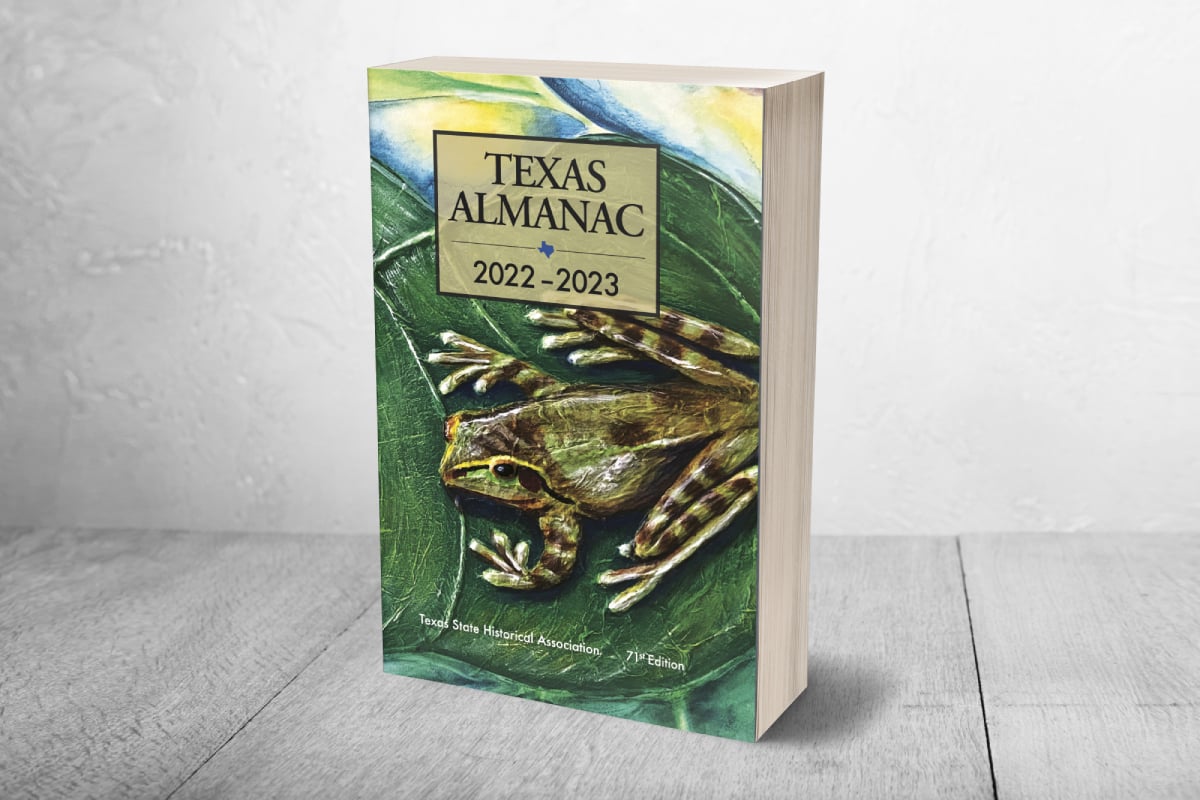Economy
-
World War II through 1980. This is the second of three articles on this topic. Read part one here and part two here. See a timeline view of the 20th Century here.
-
From the Galveston hurricane through Prohibition, our state experiences some major changes between 1900–1920. This is the first of three articles on this topic. Read part two here and part three here. See a timeline view of the 20th Century here.
-
The Texas Legislature rarely meets without generating some drama, and 2023 gatherings were no exception. Yet, despite intrigue aplenty in the 88th biennial session and subsequent special sessions, lawmakers were able to pass the largest two-year budget ever and, in a second special session, a record-breaking property tax cut.
-
In short, the 87th session of the Texas Legislature was unlike any other, with the regular session addressing unparalleled challenges, and the aftermath casting Texas into the national spotlight.
-
As of August 2021, there were 59 completely wet counties in Texas and 5 completely dry counties.
-
The popularity of “taking the waters” — visiting mineral-water spas — peaked in the 1890s.
-
Index crime statistics for 2019 and 2018.
-
The story of the Dallas Federal Reserve...
-
Texas leads the nation in installed wind capacity and generation. In 2012, Texas had 21 percent of the nation’s installed wind capacity, reaching 10,648 megawatts. Iowa was second in installed wind capacity, at 4,524 megawatts.
-
The Texas economy, as fast as it has been able to thrive and triumph, it has, at times, also faced rapid and exhaustive crashes.
-
The Texas economy has had its ups and downs throughout history. Recovery from the nation's worst recession since World War II has been lukewarm compared to other economic recoveries.
-
Funding public education in Texas has been a top priorty throughout the last century. This fiscal year, 2020-2021, all funds financing for public education totaled over $67.5 billion, which was an increase of $7 billion from the previous funding level.
-
Commodities produce millions in cash receipts that benefit Texas' economy. Corn, as a crop, has maintained its position as the highest total value crop produced across Texas and averaged $551.12 million in cash receipts annually from 2013-2017.
-
Agriculture has shaped Texas throughout its history and today it continues to be a factor leading Texas' economy.
-
The principal crops produced in Texas range from cotton, Sorghum, Rice, Wheat, Corn, Hay, Silage, and many other crops.
-
Agriculture is one of the most important industries in Texas. The state is one of the top producers of livestock including cotton, sheep, goats, hay, and horses as well as many important crops such as vegetables, citrus, corn, wheat, peanuts, pecans, sorghum and rice. Texas is one of the leading exporters of agricultural commodities.
-
Texas Crop Production charts demonstrate the yield of Texas bounty
-
Texas sells a variety of hunting and fishing licenses through the Texas Parks and Wildlife Department (TWPD).
-
Fairs, festivals, and other special events provide year-round recreation in Texas, but serve to support the economic growth and financial development of the state. Some of these celebrations are of national interest, while many attract visitors from across the state.
-
A prosperous economy made passage of a record $196.9 billion biennial budget relatively easy in the 83rd Legislature but the congenial and workmanlike regular session was overshadowed by a battle royal over abortion in special sessions.
-
The Texas 2017, 85th Legislative session was astoundingly contentious. It advanced the state’s conservative push despite a rift in the ruling Republican Party.
-
The 84th Texas Legislature convened for its 140-day regular session in January 2015 with one of the most conservative and Republican-dominated governments in the country. Legislators cut taxes, beefed up border security, and passed more permissive gun laws. Actions that shaped the future of the state.
-
These are enrollments are for the Fall Semester 2012. Total enrollments for systems include extension and continuing education students. Founding dates are for the first year of classes. Systems and community college districts with multiple campuses listed are in boldface type.
-
Institutions of higher learning were established in Texas as early as the mid nineteenth century. Today, many of these institutions continue to thrive and raise the standards of Texas higher education, as well as propel forward student enrollment to levels never seen before.
-
Commercial fishing is a vital industry in Texas and one regulated by the Texas Parks & Wildlife Department. The total Texas coastwide landings in 2014 were 74.7 million pounds of seafood, valued at more than $262.6 million.
-
Transportation was a major problem facing early settlers in Texas but as early as 1879, railroad mileage in Texas reached 2,440 miles and only continued to be expanded. Today, Texas has more railroad mileage than any other state and the largest number of railroad employees.
-
The telecommunications infrastructre in Texas as vast and advanced and help empower Texas' growth.
-
Texas leads the nation in installed wind capacity and generation.
-
Texas is one of the few states who has its own electric grid. In the rest of the country, and since 1935, power plants connect to two main larger grids: one that serves the Eastern half of the country, and one that powers the Western half.
-
The state's rate of job growth was the second highest among the ten most populous states (after Florida) and the sixth highest among all states.
-
Texas thrives when it comes to business and transportation. The rate of job growth, as of 2019, was the second highest among the ten most populous states in the country (after Florida) and the sixth highest among all states.
-
Mesquite has had an important role in Texas history. Mesquite grows at least one-third of the land area of the state and in all regions except the East Texas Piney Woods.
-
Texas natural resources are abundant and the rich biodiversity of the state thrives across its many geographic environment that include millions of acress of forestland.
-
Texas has over 63 million acres of forests and woodlands. These are located across a vast 43-county region that forms the western edge of the southern pine region and extends from the counties of Bowie and Red River in northeast Texas to Jefferson, Harris, and Waller counties in southeast Texas.
-
The leading nonpetroleum mineral commodities produced in Texas include portland cement, crushed stone, contruction sand and gravel, salt, industrial sand and gravel, lime, and masonry cement.These make up more that 95 percent of the state's nonfuel mineral value.
-
Texas has been calling itself the Third Coast of filmmaking–third after the West Coast and the East Coast–since about 1978.
-
Texas Music is diverse and vital as the state and its people.
-
The history of legislative liquor prohibition in Texas began in the summer of 1854.
-
Keeping Up with a Texas Tradition
-
No natural resource has greater significance for the future of Texas than water.
-
Once dominated by the Missions, Texas ranching shaped Texas, its history and environment.
-
The Texas town of Thurber was named for New York grocer and investor H. K. Thurber.
-
The eight most notable Texas Ranches have played important roles in Texas History.
-
The two major university systems in Texas had slow and shaky beginnings.
-
Early-day Texas travelers had only four choices when they needed to get from one town to another walk, ride a horse, bounce along in a buggy or take a stagecoach.
-
For Texans, the 20th century began on January 10, when oil was discovered at Spindletop.
-
The "Great Hurricane" hit Galveston on Sept. 8, 1900.
-
Texas in the 20th Century experienced devastating events but also established unforgettable historical legacies. Read a narrative of this time period here.

It doesn't get any more Texan than this…
Purchase your copy of the brand new Texas Almanac today!
Buy now »
